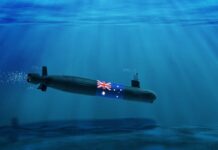Assuming it proves valid, the Chinese military has proclaimed a potentially significant advancement in energy weapon technology.
According to the South China Morning Newspaper, China’s National University of Defense Technology officials have asserted that they’ve crafted a cutting-edge cooling system. This system would enable high-energy lasers to operate continuously without overheating.
Laser technology has existed for many years, but the excessive heat produced by high-energy beams has often caused malfunction. This has thwarted prior global efforts to create similar weapon systems.
As stated in the report, the innovative Chinese cooling method would employ gas to blow through the weapon, extracting surplus heat. This would enable the weapons to fire exact laser beams without losing power or becoming distorted, potentially indefinitely.
“Not only in the first second but also maintained indefinitely,” the researchers stated in their newly published paper regarding the supposed cooling technology, found in the Chinese-language journal Acta Optica Sinica.
While the United States has experimented with comparable technologies, as highlighted by the SCMP, these attempts have mainly stumbled, as they weren’t sufficiently destructive to become mainstream weapons.
Steve Weaver, a former British military official, commented on the news through a tweet, observing that if the information is accurate, it will position China ahead of the United States in several aspects.
He wrote, “If [Chinese scientists] have overcome the distortion and heating issues as claimed, in a (relatively) small enough unit for deployment, this is a big breakthrough considering the US failures in this area.”
Besides being a presumably more economical alternative to traditional missile systems, as it doesn’t require conventional munitions, these advanced lasers might also be capable of targeting satellites, such as those in Elon Musk’s Starlink system, military scientists informed the SCMP.
However, it is wise to approach these claims skeptically until the system is in operation, particularly after the incident involving the so-called room-temperature superconductor.
Nevertheless, such a breakthrough is not entirely implausible — after all, why not?















